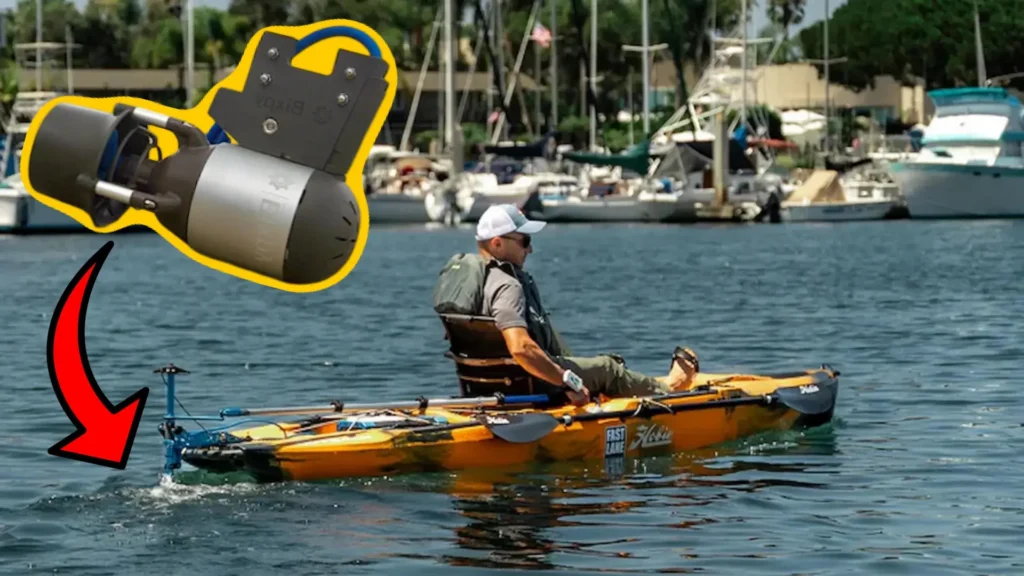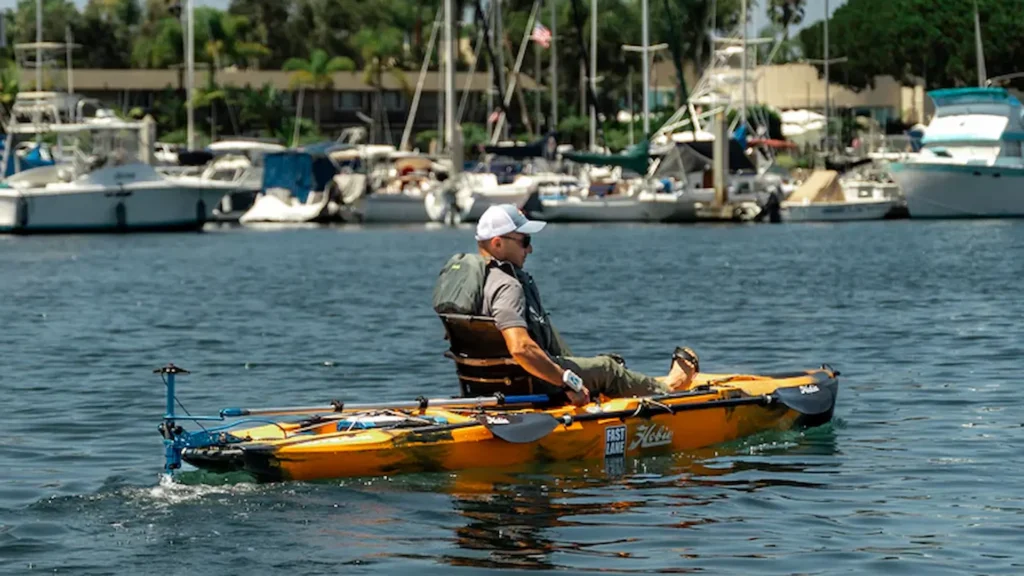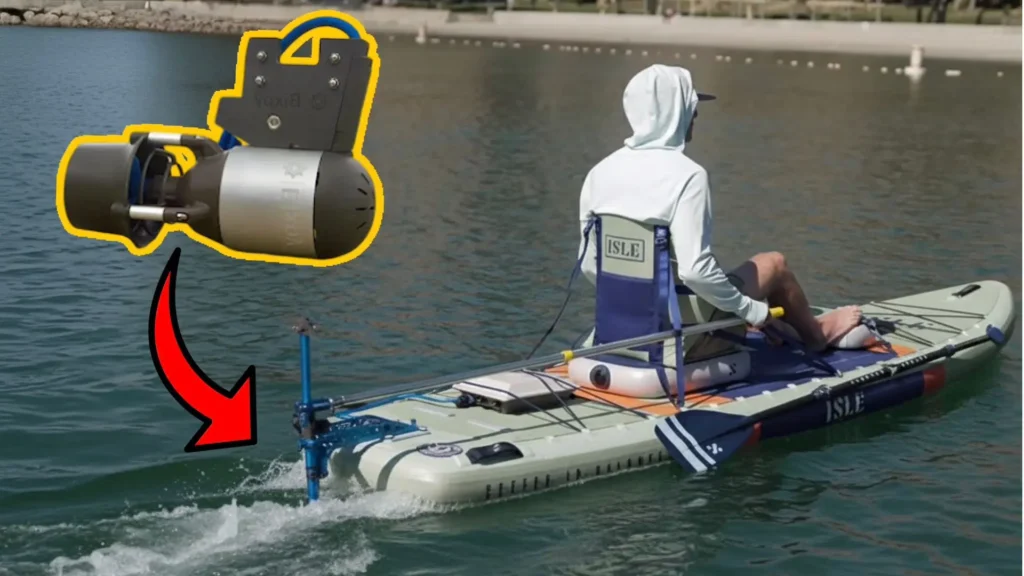Bixpy Motor vs. Traditional Kayak Motors: Your Ultimate Electric Kayak Motor Showdown
Let’s break down how Bixpy’s slick jet-drive propulsion stacks up against those classic propeller-driven trolling motors. Whether you’re hitting the water for fishing, cruising, or pure adventure, we’ll help you outfit your kayak like a pro. In this deep dive, we’ll explore the nitty-gritty differences in tech, how they perform, the installation process, what they cost, and what’s new on the horizon. We’re talking DIY tips, side-by-side comparisons, and the expert advice you need to pick the perfect motor. So, whether you’re comparing Bixpy motor specs head-to-head with familiar trolling motor stats or hunting for straightforward installation guides, we’ve got you covered:
- Key tech and design differences laid bare
- Performance benchmarks: speed, power, efficiency, and noise levels
- Easy DIY installation and maintenance walkthroughs
- Real-world use case recommendations
- Long-term value, cost breakdowns, and what’s next in innovation
Get ready for the ultimate showdown between Bixpy’s jet-drive system and the tried-and-true traditional kayak motors. We’re bringing you the authentic DIY expertise and real-world testing that KayakDIY is known for. Want to know how we got here? Check out our story on the How KayakDIY Got Started page and let’s elevate your kayak game with proven, hands-on methods.
What’s the Real Difference Between Bixpy Motors and Old-School Kayak Motors?
Bixpy motors use a clever jet-drive impeller system. It sucks water in and blasts it out at high pressure, giving you weedless thrust that’s perfect for shallow spots. Traditional trolling motors, on the other hand, spin a propeller right in the water to push you forward. This core difference impacts how they mount, how they handle weeds, and how nimble they are on the water.
How Does Bixpy’s Jet Drive Tech Stack Up Against Propeller Motors?
Jet drive tech is all about a sealed impeller inside the motor unit. It pulls water in and speeds it up through a nozzle, creating thrust without any exposed blades. This means no more snagging on weeds or hitting rocks, and you can even run in just a few inches of water, opening up more shallow areas. Propeller motors use those familiar spinning blades that churn through the water. They offer solid low-speed torque but are definitely more prone to getting tangled in weeds or other underwater junk. Understanding these propulsion basics helps explain why jet drives are so agile in clear water, while props deliver more grunt at slower speeds.
What’s Great and Not-So-Great About Bixpy Motors?
Before we dive into Bixpy’s perks, let’s think about how its compact design fits onto different kayak setups.
- Shallow-Water Champion: The impeller design means no more fouled blades or dinged-up rocks.
- Easy to Haul: The motor and battery pack together weigh under 15 lbs, making shore transport a breeze.
- Flexible Mounting: Adapters work with fin boxes, rudder systems, or even Power-Pole mounts for your own custom setup.
- Hands-Free Control: A wireless remote lets you dial in your speed without taking your hands off your rod or paddle.
- Less Raw Thrust: With a peak thrust of around 30 lbs, it won’t match some of the beefier 55 lb trolling motors when you’re really pushing it.
- Battery Dependent: You’ll need a high-capacity Lithium-ion pack, and expect around 1–2 hours of run time at full blast.
- Higher Price Tag: It’s a bigger upfront investment compared to basic 12 V trolling units.
These trade-offs are key to deciding if you value shallow-water stealth and portability more than maximum power and all-day run times.
What Are the Pros and Cons of Traditional Trolling Motors?
Traditional propeller motors get the job done with consistent thrust from their spinning blades.
- Serious Thrust Power: Models pushing up to 55 lbs can handle strong currents and bigger kayaks with ease.
- Longer Run Times: 12 V lead-acid batteries can often keep you going for 4–6 hours at slower speeds.
- Budget-Friendly: You can snag entry-level units for under $200, and there’s a huge variety to choose from.
- Weed Magnets: Those exposed propellers love to tangle with weeds and fishing lines.
- Tricky Mounting: Transom or bow mounts often mean drilling holes and adding reinforcement plates.
- Heavy and Bulky: The motor and batteries can easily top 40 lbs, making solo launches a workout.
While propeller motors win on thrust and price, their design means you’ll need to be diligent with rigging and maintenance.
How Do Mounting Options Differ Between Bixpy and Traditional Motors?
Mounting a Bixpy motor usually involves using your kayak’s existing fin or rudder boxes with special adapters. This means no drilling and keeping your hull pristine. Traditional trolling motors, however, often require a transom or bow bracket that needs to be bolted on, sometimes with reinforcement, adding permanent hardware. Knowing your mount compatibility upfront will save you installation headaches and keep your kayak looking sharp.
Bixpy vs. Traditional Kayak Motors: Performance and Efficiency Face-Off
Let’s compare speed, thrust, battery efficiency, and noise levels to figure out which motor is your perfect match for your usual paddling spots and activities.
What Are the Speed and Thrust Differences Between Bixpy and Trolling Motors?
Here’s a quick look at how jet-drive and propeller thrust translate to top speeds with some common models:
| Motor Type | Thrust (lbs) | Top Speed (mph) | Typical Use Case |
|---|---|---|---|
| Bixpy J-2 | 30 | 3.5 | Shallow-water fishing missions |
| Minn Kota Endura C2 | 30 | 2.8 | Cruising on calm waters |
| Newport Vessels NK180 | 55 | 3.0 | Tackling currents and heavier loads |
As you can see, Bixpy’s jet drive can actually be a bit quicker than similar-thrust propeller units thanks to efficient nozzle acceleration. Meanwhile, those higher-thrust trolling motors are the kings of pushing bigger kayaks or handling tough conditions.
How Do Battery Life and Runtime Compare for Both Motor Types?
Bixpy’s Lithium-ion battery system will typically give you about 1.5–2 hours at half-throttle. On the flip side, a 12 V lead-acid or LiFePO4 battery on a trolling motor often lasts 4–6 hours when you’re cruising at low speeds. The good news is that LiFePO4 battery tech is getting lighter and lasting longer, helping to close that gap. To get the most out of your battery, it’s all about matching your throttle use and battery capacity to your planned trip.
How Do These Motors Perform in Different Water Conditions, Especially Shallow Water?
Jet-drive motors keep pushing strong even in just a few inches of water, easily gliding over submerged obstacles. Propeller units start losing efficiency and risk damage if they dip below about a foot of depth. On open lakes, both systems perform pretty much the same. But if you’re navigating rivers with lots of debris and weeds, the jet drive’s snag-free operation is a huge advantage.
What’s the Noise Level and Stealth Edge for Each Motor When Kayak Fishing?
Jet-drive units make a focused water jet sound that’s often quieter and less likely to spook fish than the churning of propellers. Traditional trolling motors tend to create more of a buzz and vibration as their blades cut through the water, which can alert wary species and disturb the underwater peace. If you’re all about stealthy fishing, Bixpy’s jet propulsion definitely gives you an edge.
Installing and Maintaining Bixpy Motors vs. Traditional Kayak Motors: The DIY Breakdown
Let’s get practical with installation and care tips to keep your motor running smoothly, season after season.
What Are the Step-by-Step Installation Guides for Bixpy Motors?
Here are the basic steps to get your Bixpy Jet DIY Kit mounted on your kayak:
- First, secure the right adapter (fin, rudder, or power-pole style) into your chosen mount point.
- Next, slide the motor housing onto the adapter until you hear a satisfying click.
- Then, attach the battery pack to its mounting bracket where it’s easy to reach.
- Finally, pair up the wireless remote by following the included instructions.
For the full visual treatment, including video walkthroughs and all the adapter options, dive into the Bixpy Jet DIY Kit For Kayaks partner page. Once you’ve nailed these steps, you’ll have a tricked-out setup with zero permanent hull modifications.
How Do You Install Traditional Trolling Motors on Different Kayak Types?
Getting a propeller motor mounted typically involves:
- Positioning the transom bracket at just the right height.
- Marking and drilling pilot holes, then securing everything with stainless steel bolts.
- Running battery cables neatly inside the hull or along the gunnels.
- Testing the tilt and trim to make sure the propeller is at the perfect depth.
Depending on your kayak’s hull material (like rotomolded versus thermoform), you might need backing plates to spread the load. Getting these details right from the start prevents leaks and annoying vibrations down the road.
What Are Common Maintenance and Troubleshooting Tips for Both Motor Types?
A little routine care goes a long way in extending your motor’s life:
- Always rinse all components with fresh water after each use.
- Give the impeller housing or prop blades a quick check for any lodged debris.
- Make sure your battery connections are solid and your cables are in good shape.
- Lubricate any moving parts according to the manufacturer’s recommendations.
If you notice performance dropping, double-check your battery voltage, confirm the mounts are secure, and give the intake ports or propeller shafts a good cleaning to get that thrust back.
What DIY Customization Options Exist for Kayak Motor Mounts and Accessories?
If you’re feeling creative, you can whip up some awesome custom solutions:
- Beef up stability with reinforced aluminum mounting plates.
- 3D-print custom shrouds to direct jet flow or protect propellers.
- Build onboard battery trays with quick-release straps for easy swaps.
- Integrate rod holders in ways that keep cables from getting tangled.
Tapping into the KayakDIY community’s tips and gear mods is a fantastic way to spark ideas for unique setups tailored to your specific kayak model.
Which Kayak Motor is Your Perfect Match? Let’s Look at Use Cases and Recommendations
Matching your motor’s features to your favorite activities ensures you get the best performance where it counts.
What Motor is Ideal for Kayak Fishing: Bixpy or Traditional Trolling Motor?
If stealth and easy access to shallow water are your top priorities, the Bixpy jet drive is a clear winner. Its quiet operation and weedless design mean you won’t spook the fish in tight spots. However, if features like GPS spot-lock and the ability to hold position against wind or current are crucial, a trolling motor—especially one paired with a smart GPS adapter like the AutoBoat GPS Smart Head Motor System — will give you hands-free anchoring on open water.
Which Motor Suits Recreational Paddling and Touring Best?
For covering long distances with a little motor assist, weight and battery runtime are the big players. Bixpy’s lightweight kit reduces drag and makes carrying easier, but its runtime at cruising speed is limited. A low-thrust trolling motor paired with a deep-cycle LiFePO4 battery will give you extended runtime for those long tours at a more relaxed pace.
How Do Motors Compare for Shallow Water and River Environments?
Shallow rivers and flats are prime territory for jet-drive systems because they have minimal draft and no exposed blades. Propeller motors are more likely to hit submerged logs or rocky riverbeds. Jet drives give you the confidence to navigate unpredictable river channels with varying depths.
What Are the Best Options for DIY Enthusiasts and Budget-Conscious Buyers?
DIYers on a budget can upgrade basic trolling motors with LiFePO4 battery packs and GPS adapters. You can find great deals on components through KayakDIY’s Amazon Store. If you want the absolute least amount of modification, the Bixpy Jet DIY Kit offers a plug-and-play solution that requires no drilling, though it does come with a higher initial hardware cost.
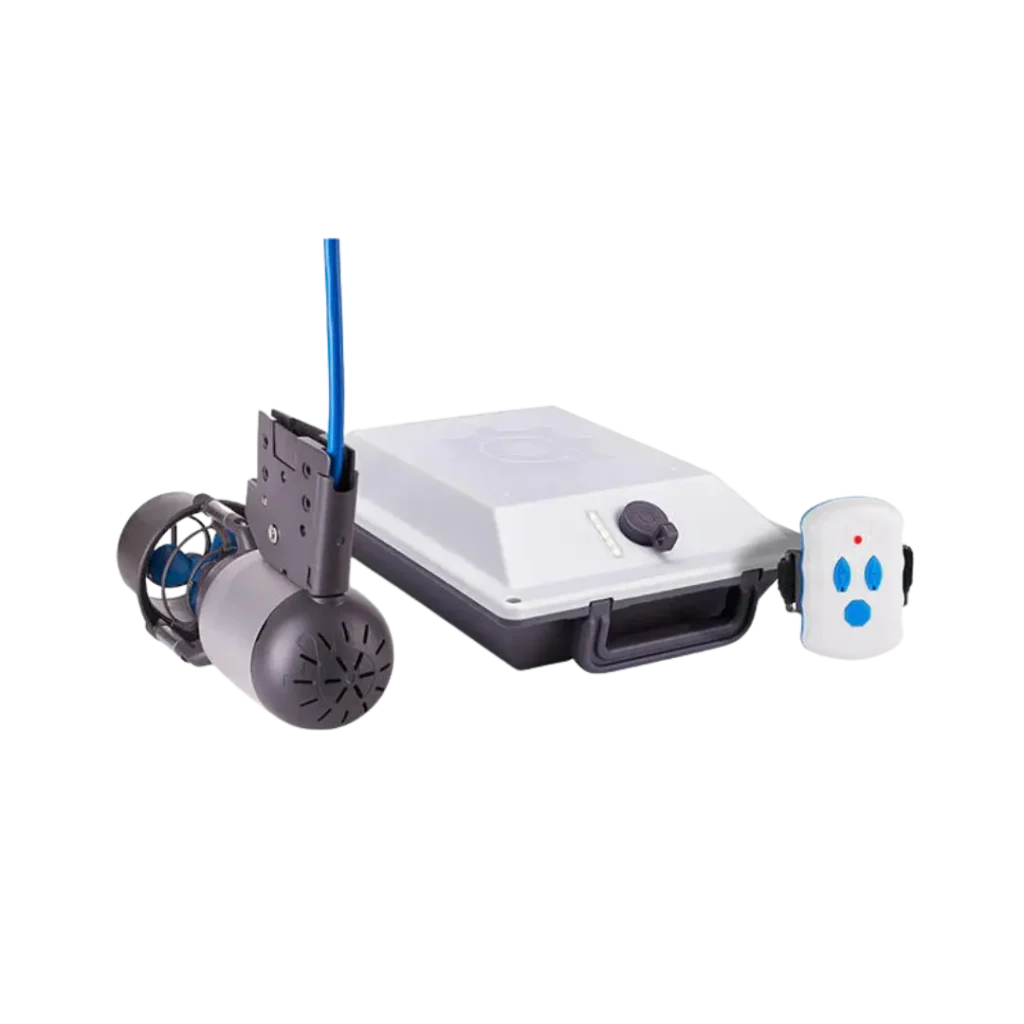
Cost Differences and Long-Term Value: Bixpy vs. Traditional Kayak Motors
Let’s break down the costs and potential resale value to help you forecast your total investment.
How Do Initial Purchase Prices Compare Between Bixpy and Trolling Motors?
| Motor Option | Kit Price | Core Component Cost |
|---|---|---|
| Bixpy K1 Jet Kit | $1,200–$1,500 | Motor + Battery Pack |
| Entry-Level Trolling Motor | $150–$300 | Motor Head Only |
| Mid-Range Trolling Motor | $400–$700 | With Bracket & Cables |
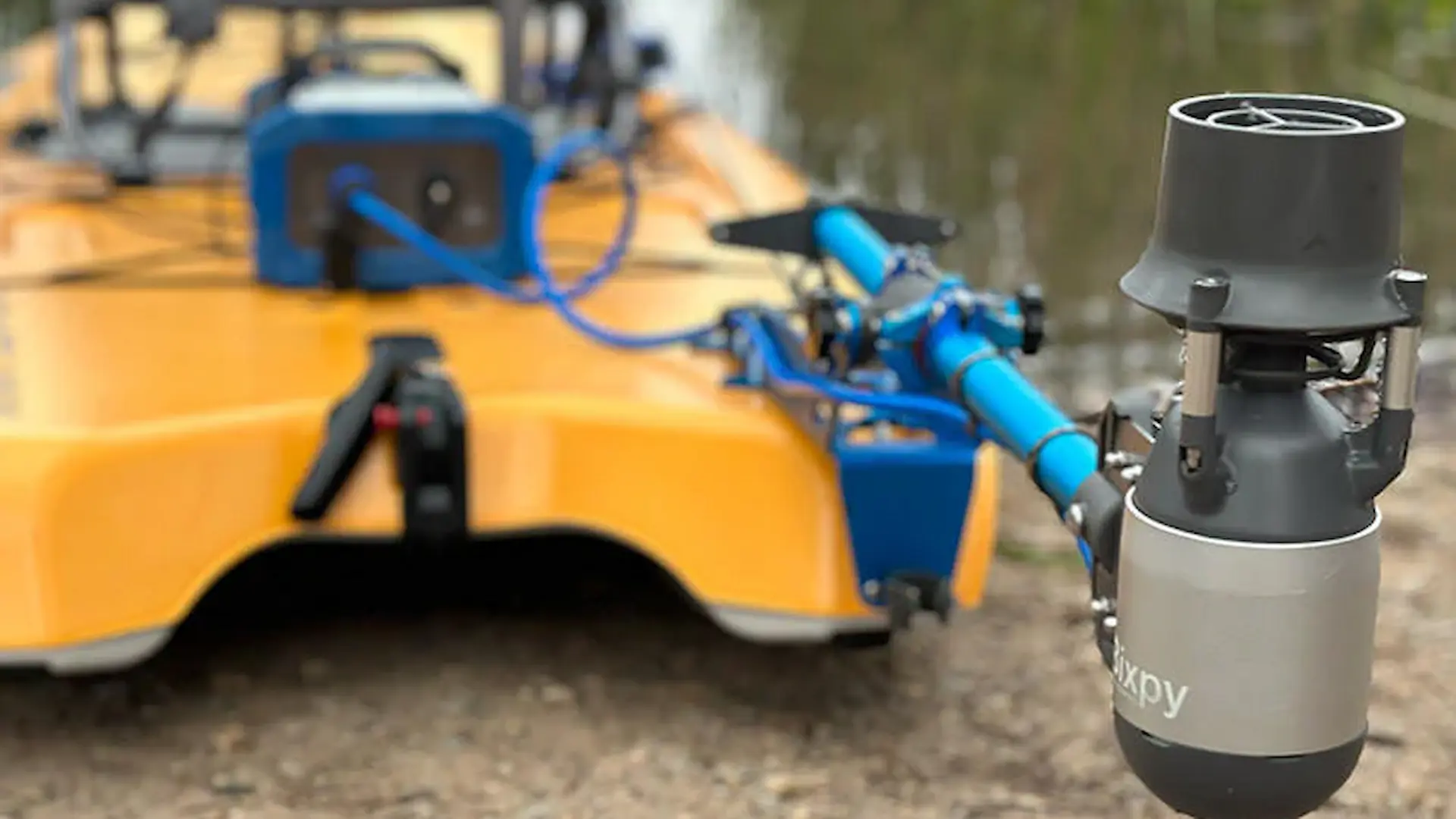
What Are the Battery and Accessory Costs for Each Motor Type?
- Bixpy Batteries: Expect to spend $400–$600 per pack; they’re lightweight and rechargeable.
- Lead-Acid Batteries: These are more budget-friendly at $80–$150 each, but they’re also heavier.
- LiFePO4 Upgrades: For around $250–$400, you can get deep-cycle packs that offer double the charge cycles.
Don’t forget to factor in the cost of chargers, cable harnesses, and any mounting hardware you might need for the complete picture.
How Does DIY Installation Impact Overall Cost Savings?
Doing the installation yourself, armed with community guides from the KayakDIY Blog, can save you anywhere from $100 to $300 compared to professional rigging. Plus, if you can reuse existing hull fixtures or opt for non-drill mounting kits, you’ll save even more and help maintain your kayak’s resale value.
What Is the Expected Lifespan and Reliability of Each Motor?
Jet drives feature sealed housings that are built to resist corrosion and mechanical wear, often lasting 3–5 years with regular use. Propeller motors, with their exposed shafts and blades, require more frequent attention but can easily last over 5 years if you keep up with maintenance. Ultimately, the lifespan and reliability of both systems will heavily depend on your battery cycle counts and charging habits.
What Are the Latest Trends and Innovations in Kayak Motor Technology?
Staying on top of new features and market shifts will help ensure your investment stays cutting-edge.
How Are Battery Technologies Like LiFePO4 Improving Kayak Motor Performance?
LiFePO4 batteries are game-changers, offering up to 2,000 charge cycles, faster charging times, and more stable voltage under load compared to traditional lead-acid packs. This innovation means less weight and more runtime, pushing electric kayak systems closer to all-day usability.
What New Features Are Emerging in Smart Trolling Motors and GPS Integration?
Manufacturers are packing in features like built-in GPS spot-lock, route planning, and even autonomous anchoring. Affordable retrofit kits, such as the AutoBoat GPS adapter, are making it easier than ever to add waypoint navigation and anchor modes to basic motors that don’t have these electronics built-in.
How Is the Market Growing for Electric Kayak Motors and DIY Customization?
Online communities and platforms like KayakDIY on YouTube and TikTok (@kayakdiy_channel) are fueling the demand for customizable, wallet-friendly solutions. Innovations in 3D-printed mounts, universal adapters, and battery packs continue to make motorized paddling more accessible to everyone.
Where Can You Find Trusted Reviews, Tutorials, and Resources for Bixpy and Traditional Kayak Motors?
Tap into the KayakDIY ecosystem of guides, community forums, and affiliate resources to help you on your motor setup journey.
What Are the Best KayakDIY Guides and Video Tutorials for Motor Installation?
Head over to the KayakDIY Blog for detailed written tutorials, and don’t miss the step-by-step installation videos on KayakDIY’s Facebook Page and YouTube Channel.
How Do Expert Reviews Compare Popular Models Like Bixpy K1 and Minn Kota Endura C2?
Our hands-on comparisons include rigorous speed tests, thrust evaluations, and real-world fishing scenarios, all backed by manufacturer specs and our own field data. This detailed analysis helps you weigh the jet-drive speed of Bixpy against the proven reliability of a Minn Kota Endura C2. Bixpy is designed for speed and efficiency. You will achieve faster speeds with Bixpy. Minn Kota C2 Endura is a trolling motor and it is heavier, it doesn’t float, it isn’t 100% waterproof, and it will be slower. Minn Kota C2 Endura is cheaper but lacks many features that Bixpy has.
Where Can You Access Community Forums and Support for Kayak Motor Users?
Join the “Kayak Rigging and Customization” Facebook Group to swap tips, troubleshoot any issues, and share your awesome build photos with fellow enthusiasts.
What Are the Recommended Accessories and Battery Systems for Optimal Motor Use?
When it comes to picking out accessories, check out KayakDIY’s Amazon Store or our all-in-one hub at KayakDIY Universe for batteries, chargers, mounting kits, and branded gear. You can also show your support for the channel by grabbing some cool lifestyle apparel from the KayakDIY Teespring Store.
Whether you go for the innovative Bixpy jet drive or a dependable propeller motor, matching your motor’s strengths to your kayak style and adventure goals will open up a whole new world of paddling possibilities. Invest wisely, follow those proven DIY installation guides, and lean on the community’s expertise to make every outing better.
